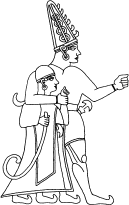2011/1 (Tome LXXXV) Tome LXXXV, numéro 1
2010/2 (Tome LXXXIV) Tome LXXXIV, numéro 2
2010/1 (Tome LXXXIV) Tome LXXXIV, numéro 1
2009/2 (Tome LXXXIII) Tome LXXXIII, numéro 2
2009/1 (Tome LXXXIII) Tome LXXXIII, numéro 1
2008/2 (Tome LXXXII) Tome LXXXII, numéro 2
2008/1 (Tome LXXXII) Tome LXXXII, numéro 1
2007/2 (Tome LXXXI) Tome LXXXI, numéro 2
2007/1 (Tome LXXXI) Tome LXXXI, numéro 1
2006/2 (Tome LXXX) Tome LXXX, numéro 2
2006/1 (Tome LXXX) Tome LXXX, numéro 1
2005/2 (Tome LXXIX) Tome LXXIX, numéro 2
2005/1 (Tome LXXIX) Tome LXXIX, numéro 1
2004/2 (Tome LXXVIII) Tome LXXVIII, numéro 2
2004/1 (Tome LXXVIII) Tome LXXVIII, numéro 1
2003/2 (Tome LXXVII) Tome LXXVII, numéro 2
2003/1 (Tome LVXXII) Tome LXXVII, numéro 1
2002/2 (Tome LXXVI) Tome LXXVI, numéro 2
2002/1 (Tome LXXVI) Tome LXXVI, numéro 1
2001/2 (Tome LXXV) Tome LXXV, numéro 2
2001/1 (Tome LXXV) Tome LXXV, numéro 1




















 ) »
) » »
» Shahdidiit »
Shahdidiit »





